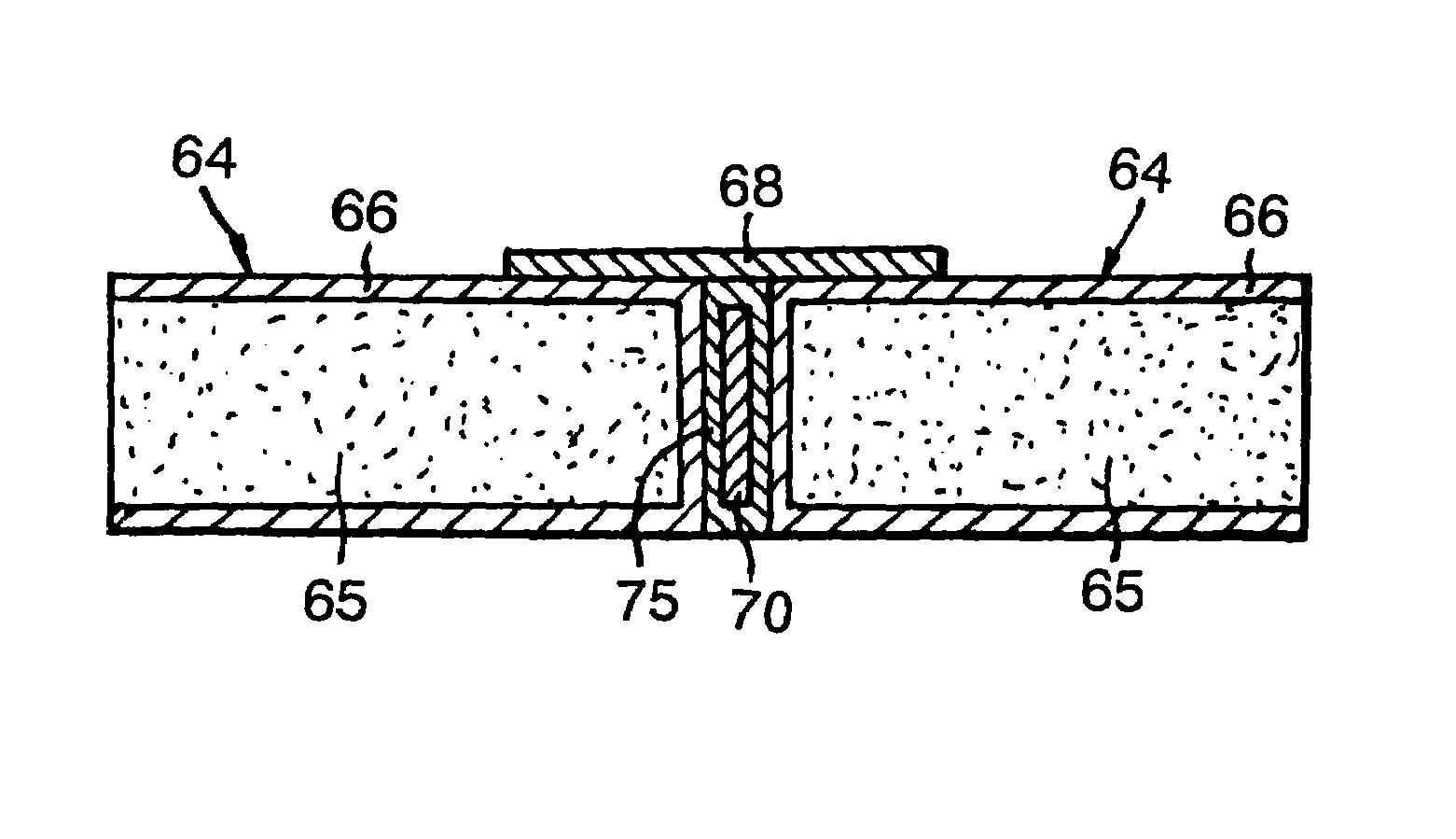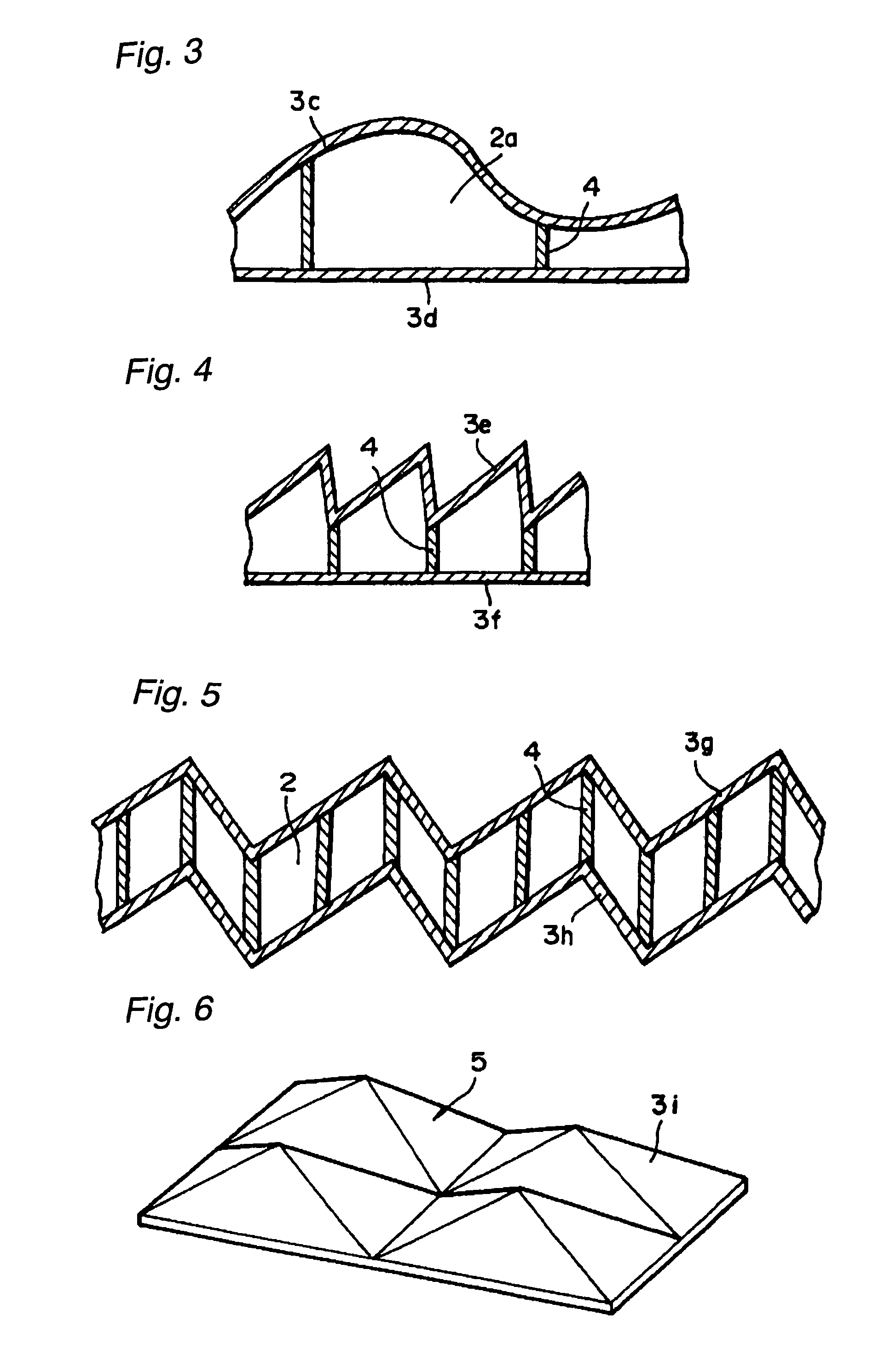FRP roofing material, manufacturing method, and its connecting structure and connecting method
a technology of roofing material and manufacturing method, which is applied in the direction of hollow wall articles, transportation and packaging, and other domestic objects, etc., can solve the problems of deterioration, increased weight per unit area, and difficulty in ensuring satisfactory strength and rigidity
- Summary
- Abstract
- Description
- Claims
- Application Information
AI Technical Summary
Benefits of technology
Problems solved by technology
Method used
Image
Examples
Embodiment Construction
[0069]Below, preferred practical forms of the present invention are explained with reference to the examples.
[0070]FIG. 1 shows a partial sectional view of FRP roofing material relating to a first embodiment of the present invention. In FIG. 1, FRP roofing material 1 has a rib structure 4 which joins together a pair of FRP sheets (skin layers) 3a, 3b arranged in parallel at a gap 2. In this practical embodiment, the rib structure 4 is also composed of FRP. However, it is possible for rib structure 4 to be composed of some other material such as metal or wood. Whatever material the rib structure 4 is composed of, it is desirable that the arrangement and incorporation thereof be carried out at the same time as the moulding of FRP sheets 3a, 3b.
[0071]Various shapes can be adopted as the sectional shape of the rib structure. FIG. 1 shows the cross-sectional shape of a rib structure 4 which simply extends vertically but various other shapes can be employed as shown in FIG. 2 for example...
PUM
| Property | Measurement | Unit |
|---|---|---|
| width | aaaaa | aaaaa |
| length | aaaaa | aaaaa |
| thickness | aaaaa | aaaaa |
Abstract
Description
Claims
Application Information
 Login to View More
Login to View More - R&D
- Intellectual Property
- Life Sciences
- Materials
- Tech Scout
- Unparalleled Data Quality
- Higher Quality Content
- 60% Fewer Hallucinations
Browse by: Latest US Patents, China's latest patents, Technical Efficacy Thesaurus, Application Domain, Technology Topic, Popular Technical Reports.
© 2025 PatSnap. All rights reserved.Legal|Privacy policy|Modern Slavery Act Transparency Statement|Sitemap|About US| Contact US: help@patsnap.com



